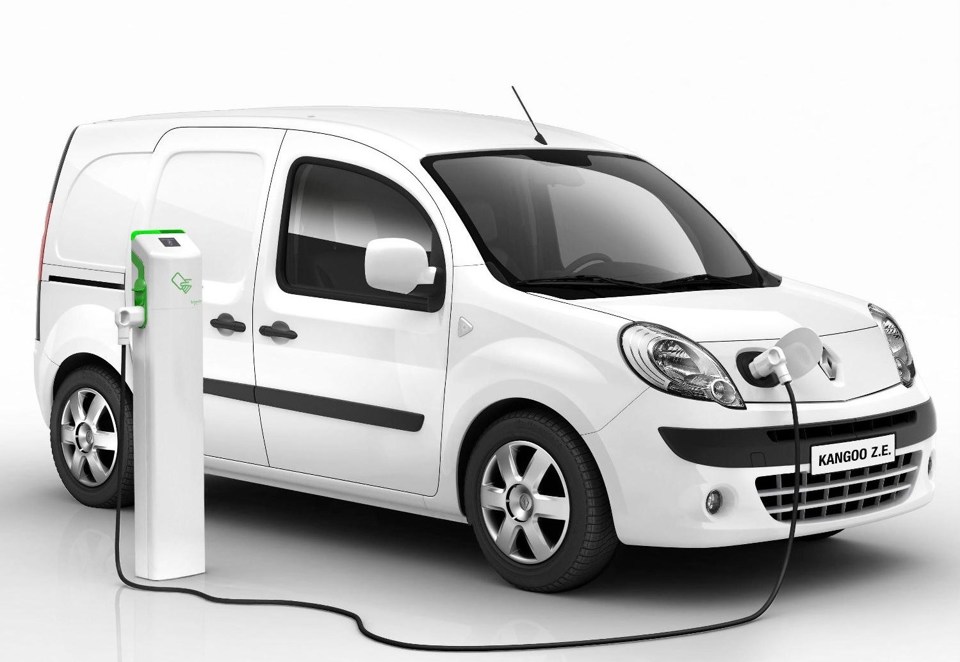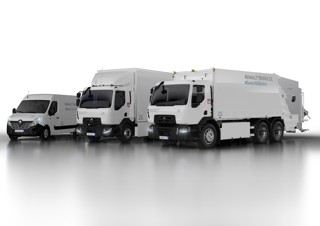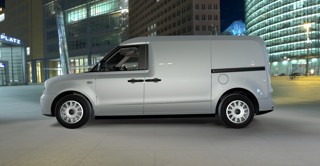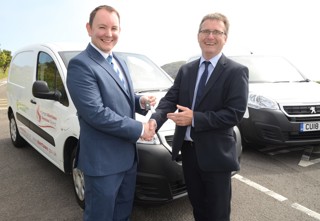The Government wants two in every five new vans sold to have emissions of less than 50g/km of CO2 by 2030. The interim target forms part of its Road to Zero strategy – a plan to phase out conventional petrol and diesel vehicles by 2040.
By then, transport secretary Chris Grayling says he expects the majority of new vans sold to be 100% zero emission and all new vans to have “significant zero emission capability”.
The Government wants almost every van to be zero emission by 2050.
Progress towards the target of up to 40% of the new van market being classed as ultra-low emitting vehicles (ULEVs) – sub-50g/km – will be reviewed in 2025. If not enough progress is being made, the Government says it will look at what “interventions” might be required.
It is hoping a combination of innovation, improved infrastructure and incentives – laid out in the strategy – will help deliver its targets.
However, with just 0.3% of new van sales currently classed as ULEVs, the Society of Motor Manufacturers and Traders (SMMT), which represents van makers in the UK, said it was concerned that targets for ULEV penetration went “far beyond” those proposed by the European Commission for vans – 30% by 2030.
SMMT commercial vehicle development manager Nigel Base said: “Achieving 40% market share would require a nearly 144-fold increase in uptake from the current position of just 0.3%.”
He continued: “Vans are business tools and drivers are typically far more sensitive to purchase price and return on investment than car buyers, while current electric van technology, which involves large batteries, can mean reduced carrying capacity.
“In addition, there is currently no bespoke charging network for these vehicles, which require larger parking bays, longer charging times and charge point locations that will fit seamlessly into their day-to-day business operations.”
The Road to Zero strategy includes a number of initiatives to boost the charging infrastructure for electric vehicles (EVs). However, they appear to be aimed at plug-in car users, rather than commercial fleet operators.
For example, the Government says it will look to mandate charge points in newly-built homes and for new lampposts to include charging points.
It will also launch a £400 million Charging Infrastructure Investment Fund to help accelerate the roll-out of charging infrastructure by providing funding to new and existing companies that produce and install charge points.
Furthermore, a new £40m programme to develop and trial wireless and on-street charging technology will be launched, as well as providing up to £500 for EV owners to put in a charge point in their home.
There is also a proposal for increasing the grant level of the Workplace Charging Scheme from £300 per socket to 75% of the purchase and installation costs of a charge point capped at a maximum of £500 per socket.
Gerry Keaney, chief executive of the British Vehicle Rental and Leasing Association (BVRLA), said: “The increased grant available through the Workplace Charging Scheme will encourage more companies to install charge points. However, we are still concerned about the cost and complications that fleet operators wanting to install EV infrastructure face when trying to arrange planning permission or deal with local distribution network operators.
“It is critical that the right incentives are in place to support this strategy. Fleets invest billions of pounds on new cars, vans and trucks each year and a significant portion of this purchasing power stands ready to bring thousands more plug-in electric vehicles on to the UK’s roads. This can only happen if they are given the right supporting environment to deliver a managed transition away from petrol and diesel engines.”
In taking a technology neutral approach, Grayling has acknowledged a role for diesel, in the short term at least.
“Cleaner diesel vehicles can play an important part in reducing CO2 emissions from road transport during the transition to zero emission vehicles, while meeting ever-more stringent air quality standards,” he said.
However, he stressed that for diesel vehicles to play their part fully, their air quality impact must continue to be reduced.
Developed over 18 months, the Department for Transport’s Transport Energy Model sets out the relative environmental performance of different fuels and technologies which will underpin future policies.
It suggests Liquefied Petroleum Gas (LPG) will also have a key role to play.
LPG vehicles emit less NOx, CO2 and particulates than both petrol and diesel models and the new report even uncovers LPG’s favourability over full petrol hybrids.
In the van sector (2.5-to-3.5 tonnes), an LPG van was estimated to be cleaner in terms of both CO2 and NOx than petrol, full petrol hybrid and even Euro 6 diesel alternatives.
While there are currently no opportunities for van or car buyers to buy an LPG model directly from vehicle manufacturers in the UK, the report does support the retrofitting of LPG systems. It also gives backing for the increased supply and sustainability of low carbon fuels through a legally-binding 15-year strategy to more than double their use to 7% by 2032.
New emissions target agreed for HGVs
A new industry-wide voluntary target for reducing HGV greenhouse gas emissions by 15% by 2025 compared with 2015 levels, is revealed in the Road to Zero report.
Although new emissions standards for HGVs have achieved significant air quality improvements, they have remained relatively constant in recent years and zero emission options must be developed and made available commercially for all types of HGVs, says the report.
As a result, the Government says it is launching a joint research project with Highways England to identify and assess zero emission HGV technologies and their suitability to the UK road network and freight operations.
It is also working with industry to test the environmental performance of the latest gas HGVs. The results of this testing will be used ‘to assess further the potential for gas HGVs to deliver emissions reductions in the short- to medium-term while zero emission options are being developed and deployed.
“They aren’t the long-term answer,” said Martin Flach, alternative fuels director at Iveco, “but gas trucks are certainly the best opportunity to do something now.
“If we all wait for electric vehicles to do what we want them to do, we’ll be waiting until 2040.”
While electric power works well for small urban delivery vehicles, it isn’t as good on heavy haulage as the batteries are still too expensive and too heavy.
Flach said: “You can make large electric vehicles but they are eye-wateringly expensive, have limited range and lower payload.”
There are two main challenges with electric vehicles, according to Steve Whelan, technical director at truck exhaust specialist Eminox: energy storage and charging infrastructure.
“In a passenger car, the load on the battery is very light,” he said. “Most cars will travel at high speed with little battery depletion because you never run at rated load.
“In a truck, the load is very heavy, which means the battery will deplete much more quickly. This can be mitigated by fitting more batteries, but they add weight and reduce payload.”
Fitting more batteries will also increase the re-charging time, which, in turn, will create extra downtime for the vehicle.
“It’s just physics, electric trucks are a long way off in heavy duty usage – it’s the same for industrial and construction equipment. They operate at high load and the technology just isn’t there,” said Whelan.
The strategy also recognises the need to reduce emissions from existing HGVs. It says the Government will provide funding for the Energy Saving Trust to develop a freight portal that will ensure HGV operators have access to reliable information on cost-effective measures to improve fuel efficiency and reduce their emissions.
























Nigel Boyle - 26/07/2018 14:46
2050 is a long way still, but to have 50% by 2030, only some 11 years away is going to be over ambitious. As there is no van for other than city drops at present and nothing serious for carrying heavy loads. I doubt that the majority of vans out of city will be moving from diesel. We have vans doing 35k a year - 50% loaded, 50% empty. Currently vans talk of sub 50 miles between charges so dream on Mr Grayling!